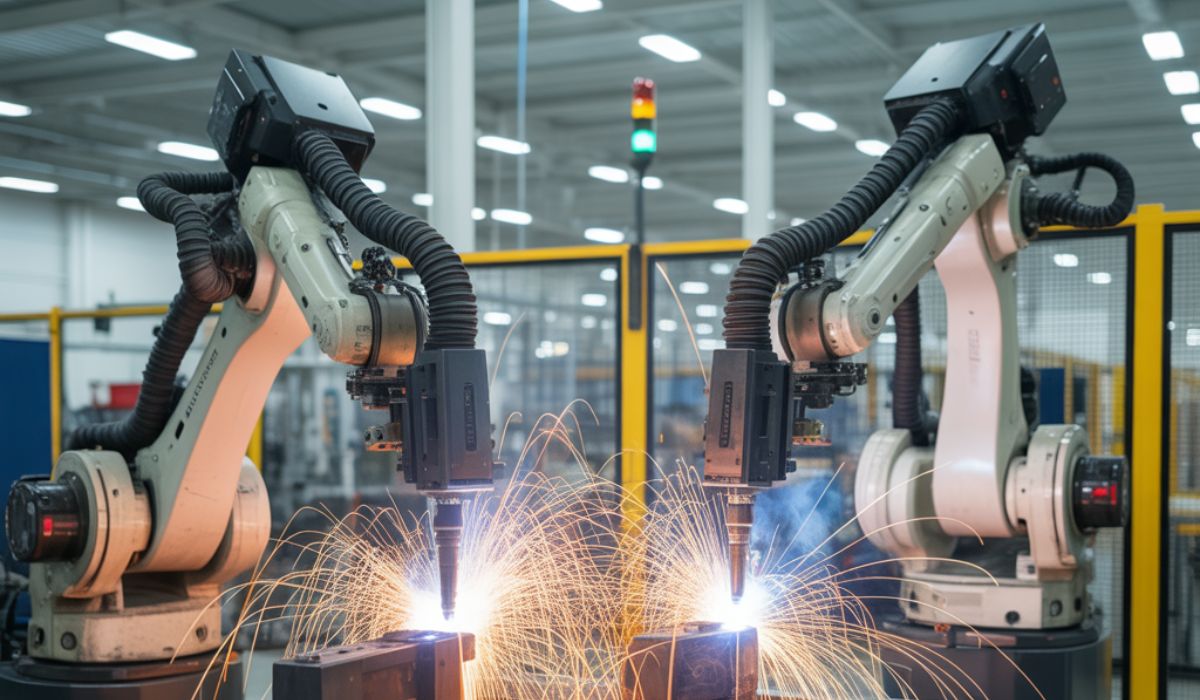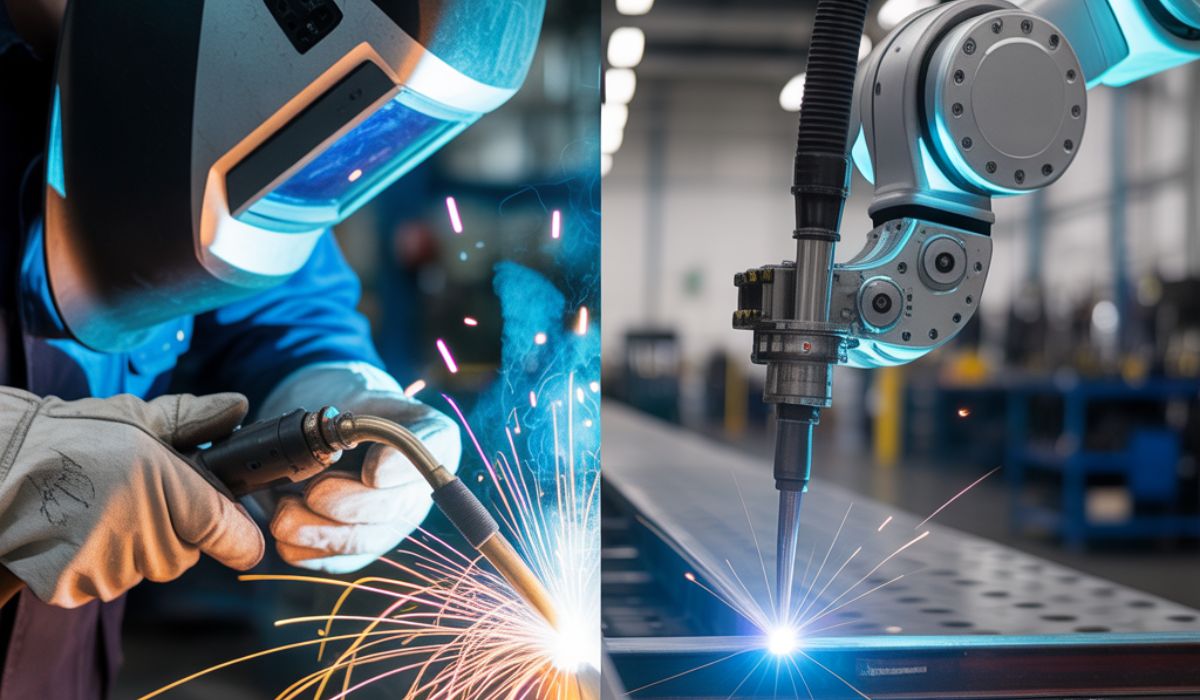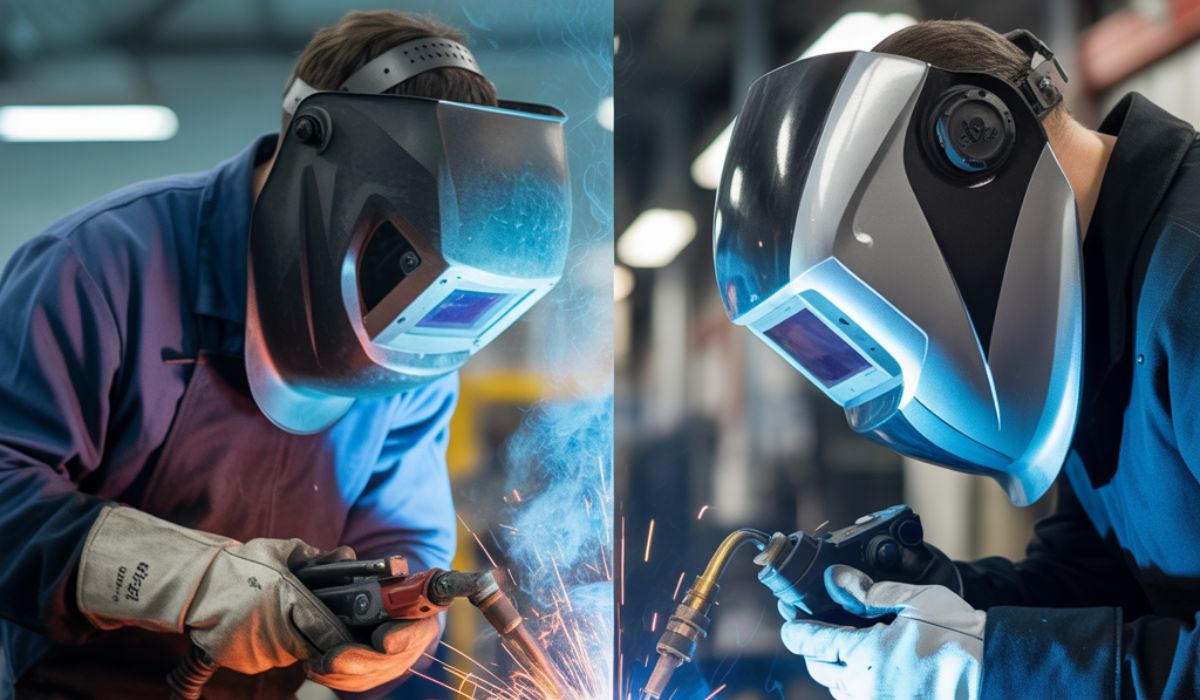Why Robotic Welding Is Now a Business Necessity for Automotive Manufacturers in Pune
The automotive supply chain in Pune has changed. OEMs are no longer tolerating variation in weld quality, inconsistent output, and missed dispatch targets. Vendor audits have become tighter, documentation demands have increased, and every Tier supplier is under pressure to prove process stability.
Manual welding simply cannot hold the tolerance and repeatability OEMs now expect.
The issue is not whether manual welding works or not. It’s that manual processes cannot guarantee the same result every shift, every day, across multiple operators.
And consistency is the metric OEMs judge you on.
If a plant wants to stay in the approved vendor list, robotic welding is not a “technology upgrade.” It is risk control.
The Hidden Cost of Manual Welding That MDs Usually Don’t Calculate
Most manufacturing companies track:
-
Labor cost
-
Consumables
-
Power
-
Production hours
But the real cost that damages profits is:
-
Rework
-
Scrap
-
Dispatch delays
-
Missed PPM targets
One batch of rejected parts from an OEM is enough to:
-
Trigger a line audit
-
Put you under review
-
Lose your position in the vendor chain
Rework is not just extra time.
It is reputation damage.
No business can afford “operator-dependent quality” in a market where your competitor can deliver zero-variation joints with a robot.
Why Robotic Welding Solves a Business Problem (Not Just a Technical One)
Forget the robotic hype. Look at the outcome:
| Business Factor | Manual Welding | Robotic Welding |
|---|---|---|
| Quality Consistency | Varies by operator, fatigue, shift | Stable & repeatable |
| Cycle Time | Fluctuates | Fixed & predictable |
| Manpower Dependency | High | Low |
| OEM Audit Confidence | Weak | Strong |
| Dispatch Reliability | Risky | Controlled |
A Managing Director’s real advantage with robotic welding is predictability.
When cycle time is fixed and weld quality is consistent,
-
Planning becomes accurate
-
Dispatch commitments become reliable
-
Cost per part becomes stable
And this is what OEMs reward.
Pune’s Manufacturing Belt Has a New Competitive Reality
Chakan, Talegaon, Pimpri, Bhosari, Ranjangaon – this belt has one thing in common:
Tier suppliers are competing for the same OEM panels, frames, seat components, chassis parts, and structural assemblies.
And OEMs now look at:
-
Joint consistency
-
Documentation traceability
-
Stability of process parameters
If a competitor automates before you, they don’t just become more efficient.
They take leverage away from you.
When negotiations happen, the supplier with process control dictates confidence.
The one with manual dependency gets pushed on price.
This is how businesses lose margin slowly without realizing why.
Why Fixture Design and Integration Matter More Than the Robot Itself
Robots are not the differentiator anymore.
Fanuc, ABB, Yaskawa – all are capable.
The real advantage comes from:
-
How the welding fixture is designed
-
How part clamping is controlled
-
How neck reach and path are simulated
-
How cycle time is balanced
-
How accessibility is ensured in real conditions
A poorly designed fixture turns a robot into a slow manual worker.
A well-designed fixture turns the robot into a repeatable, self-checking workstation.
Most manufacturers who say “Robots don’t improve our output” actually purchased a robot without proper fixture engineering.
The robot was never the issue.
The system integration was.
The Outcome That Actually Matters to a Managing Director
Technology does not make money.
Stable output does.
Here is the real value of robotic welding in one line:
Stable quality → Reliable dispatch → Higher OEM rating → Stronger negotiation power → Better margins.
This is the supply chain reality now.
OEMs reward:
-
Lower PPM
-
Reliable deliveries
-
Documented processes
-
Supplier self-audit discipline
Whoever controls variation controls profit.
The Strategic View: Automation Is Not About Today
A Managing Director cannot think in months.
The real risk horizon is 2–5 years.
What happens when:
-
Skilled welders become harder to hire?
-
A competitor automates and cuts rework by 60%?
-
OEMs push for weld data traceability logs as standard?
-
A production shutdown occurs because one operator is absent?
Manual dependency becomes a business vulnerability.
Robotic welding converts welding from:
-
A skilled-art problem
into -
A controlled, documented manufacturing process.
That is what protects the business long-term.
Final Thought
Automation is no longer about being modern, advanced, or technically impressive.
It is about:
-
Staying inside the OEM supply chain.
-
Holding negotiation power.
-
Securing your vendor position.
-
Protecting margin in a competitive ecosystem.
If your competitor automates before you, they gain leverage you cannot recover later.
If you automate before them,
you control the market conversation instead of reacting to it.
FAQs
Q1. Why can’t manual welding meet OEM quality standards anymore?
Because OEMs now measure variation, not just appearance. Manual welding depends on operator skill, fatigue, and shift changes. OEMs expect repeatable welds. Manual processes cannot guarantee that level of consistency.
Q2. Is robotic welding only for high-volume production?
No. That’s outdated thinking. Even medium-volume suppliers benefit because the real cost is rework, scrap, and disrupted dispatch. Robots pay back by stabilizing output, not by maximizing speed.
Q3. What if our components change frequently? Won’t automation become inflexible?
If fixture design and programming are done correctly, a robot system can handle multiple part variants without major rework. The problem is usually bad fixture engineering, not the robot.
Q4. Isn’t robotic welding expensive to implement?
The upfront cost is visible. The real cost you’re ignoring is rework, rejection, and losing OEM trust. One vendor downgrade will cost more than any robotic cell.
Q5. Will robotic welding reduce manpower?
Yes. But the main benefit is not manpower reduction. It is removing dependency on one operator whose absence can stop your line. Stable output > Lower labor cost.
Q6. How do I know if my plant is ready for robotic welding?
You are ready if:
-
Weld quality variation is affecting dispatch confidence
-
Skilled welder availability is inconsistent
-
OEM audits are asking for process stability proof
If any of these are happening, the plant is already late, not early.
Q7. Which brand of robot is better (Fanuc vs ABB vs Yaskawa)?
The robot brand is not the differentiator.
The fixture, torch reach, access path, and integration strategy determine success.
A bad integration makes any robot useless.
Q8. What is the typical ROI timeline for robotic welding?
In Pune automotive supply conditions, ROI typically falls between 9–24 months, depending on cycle time and rework elimination.
Where rework was high, ROI is often below 12 months.



